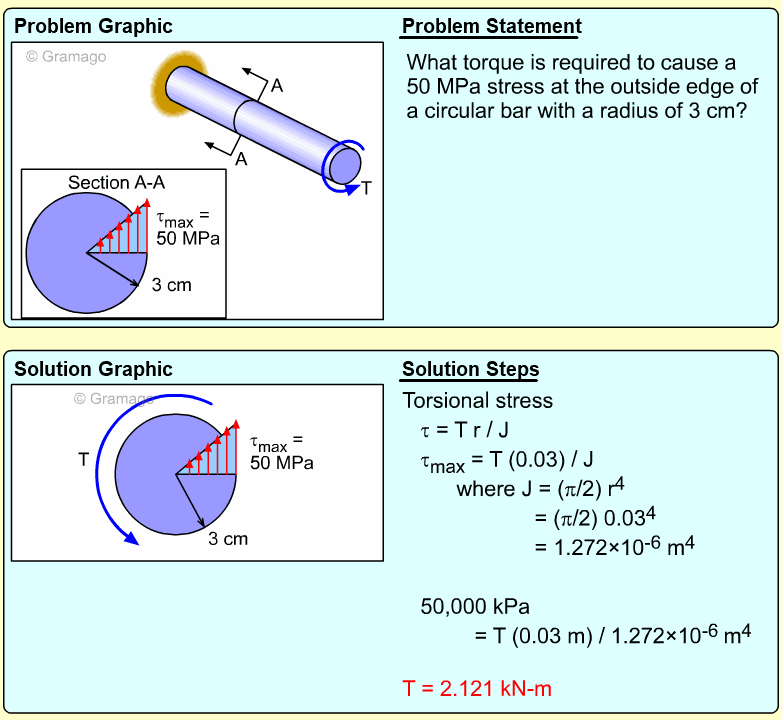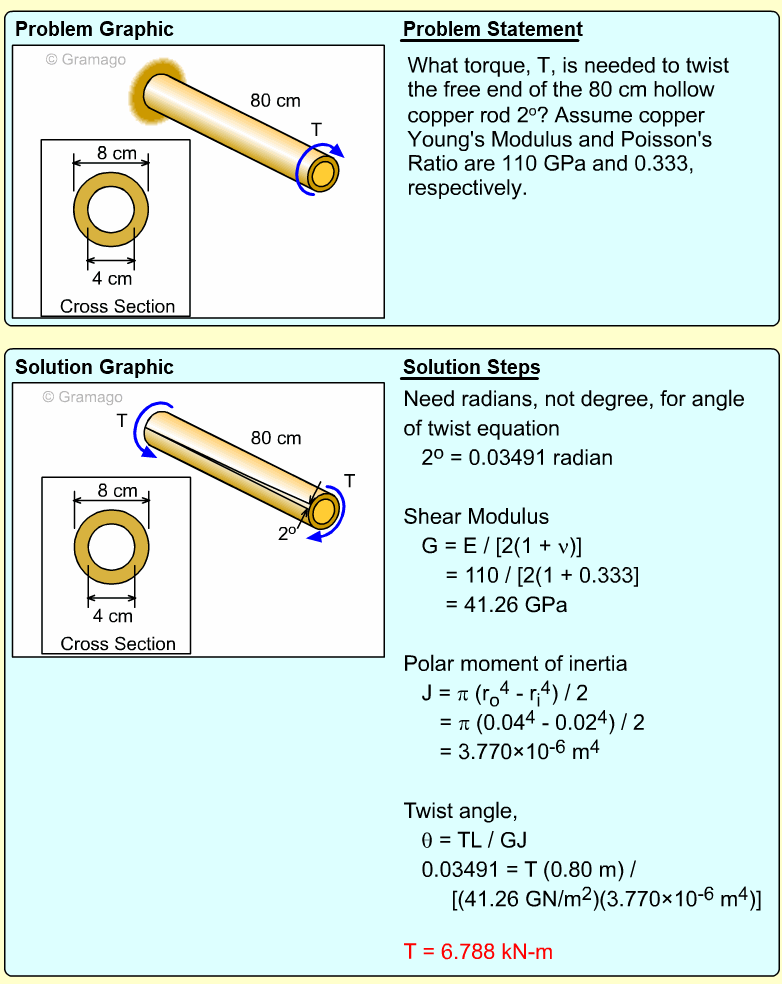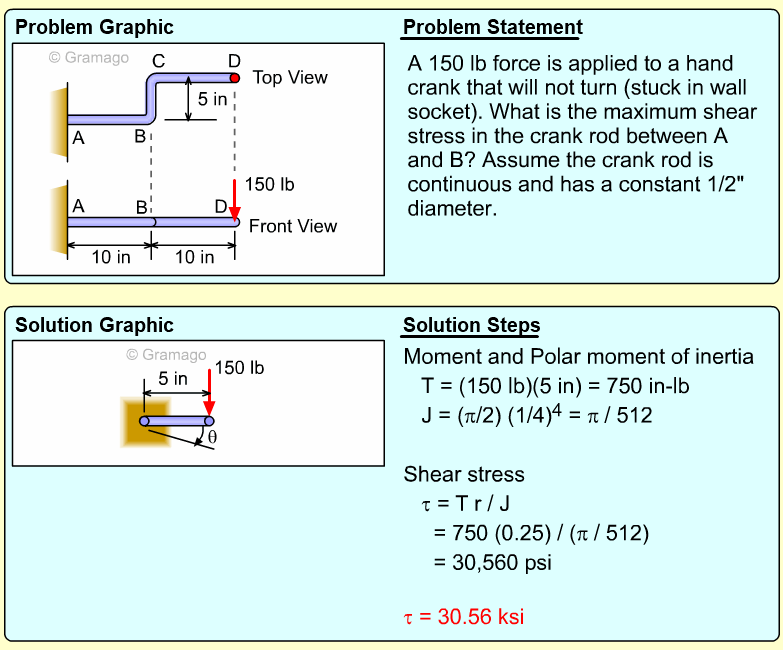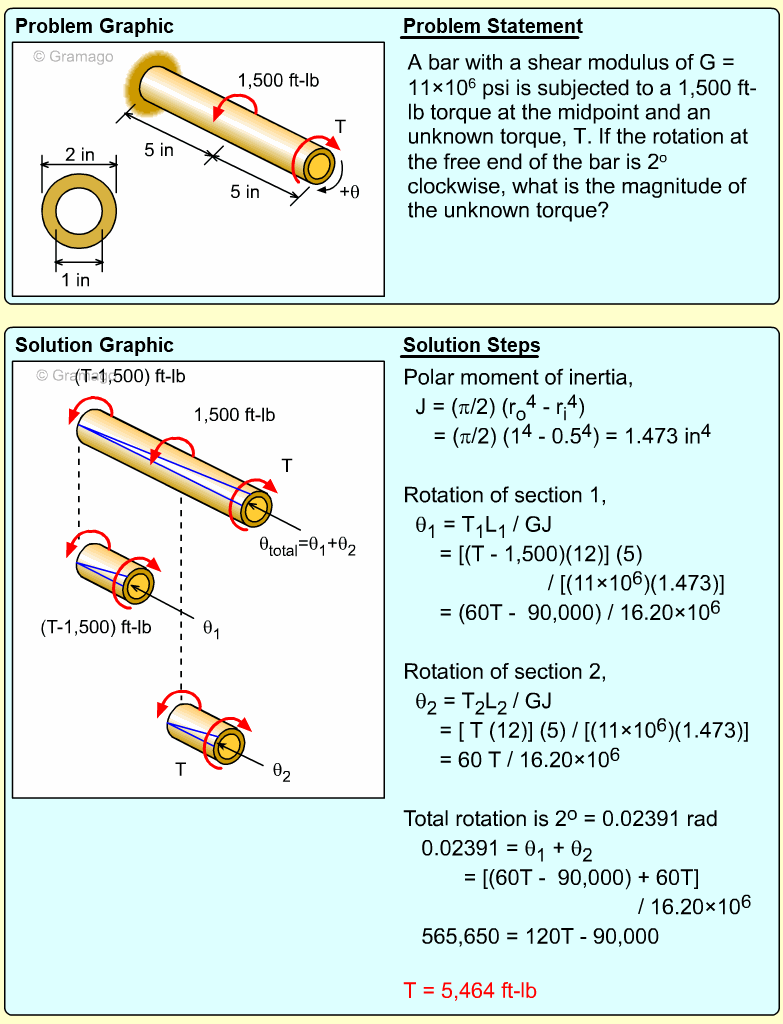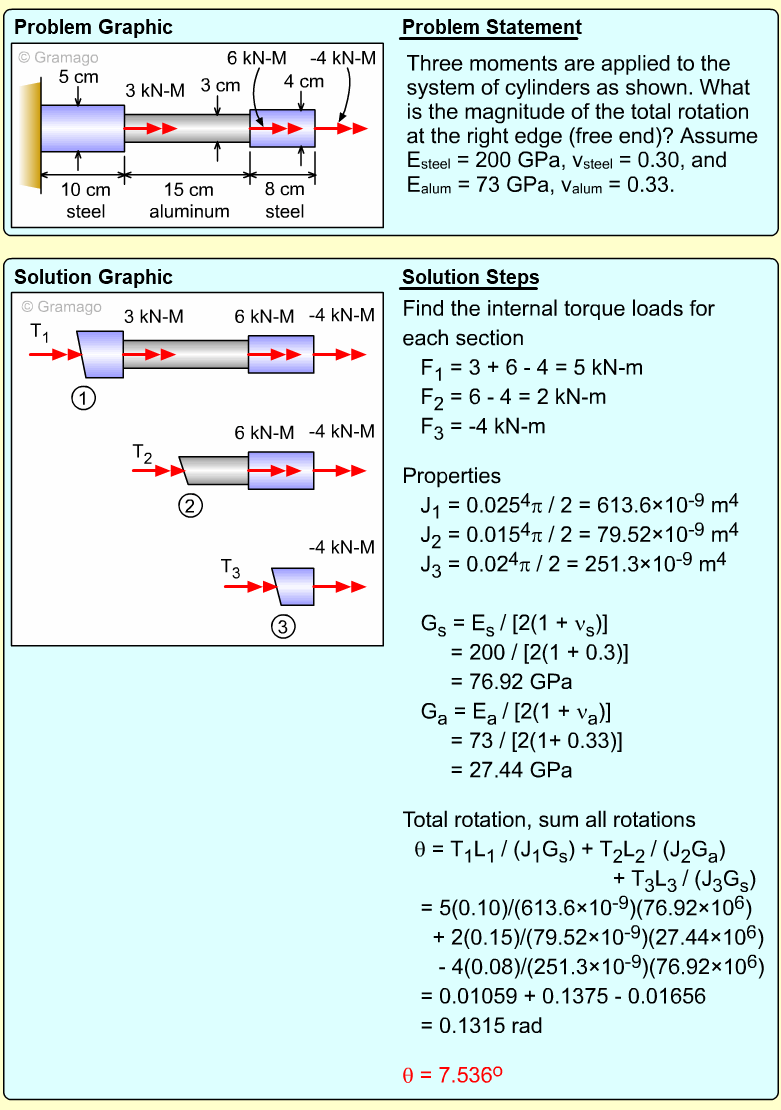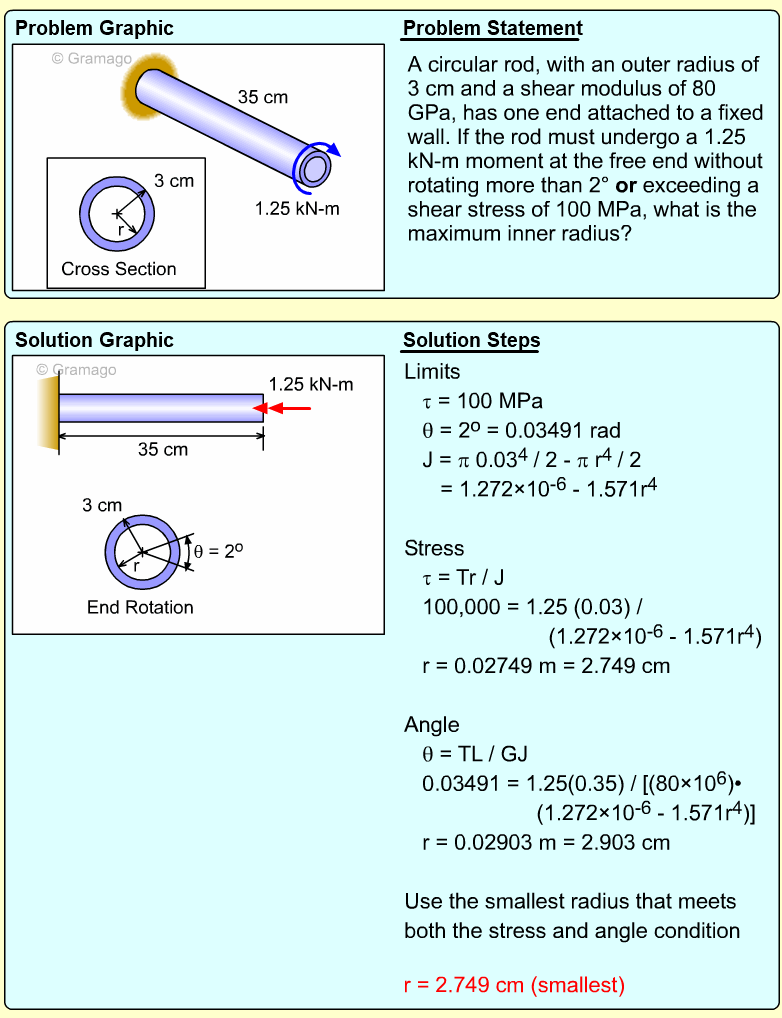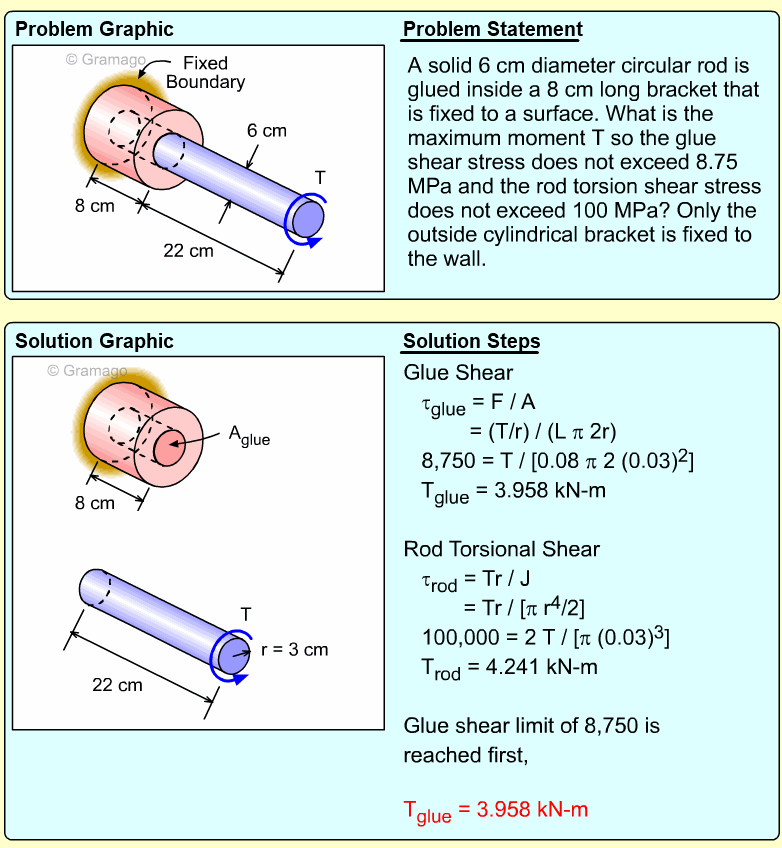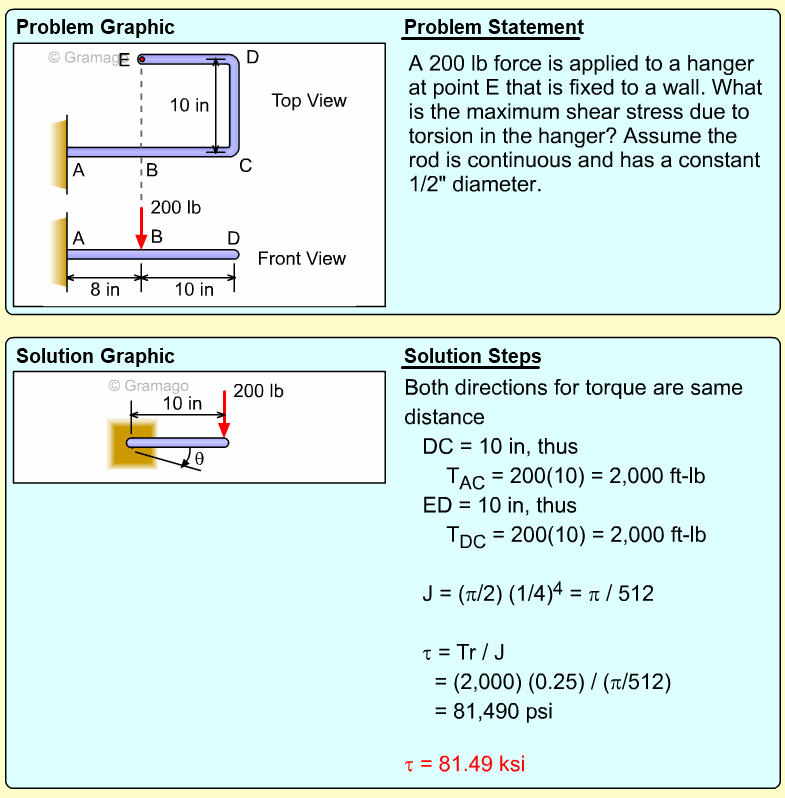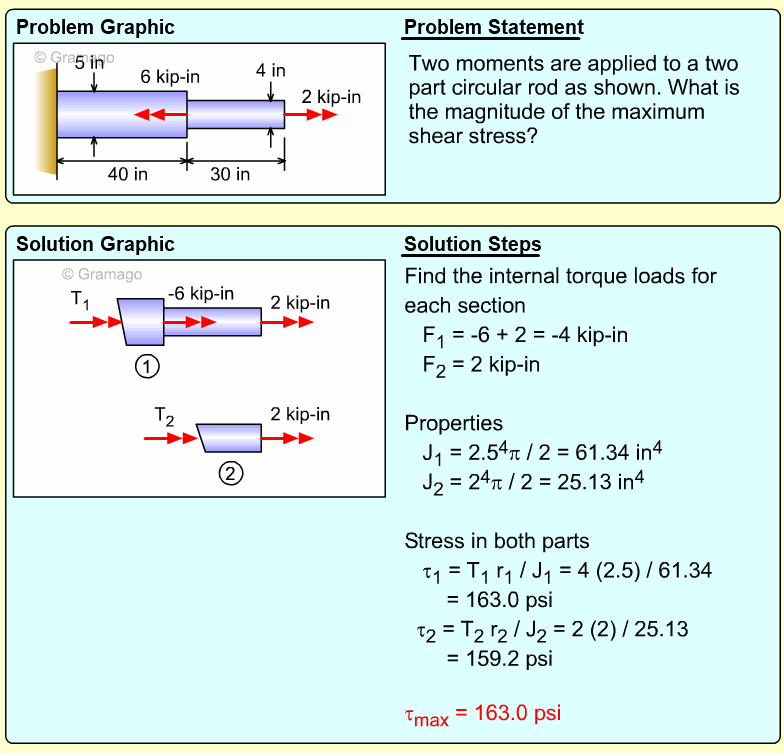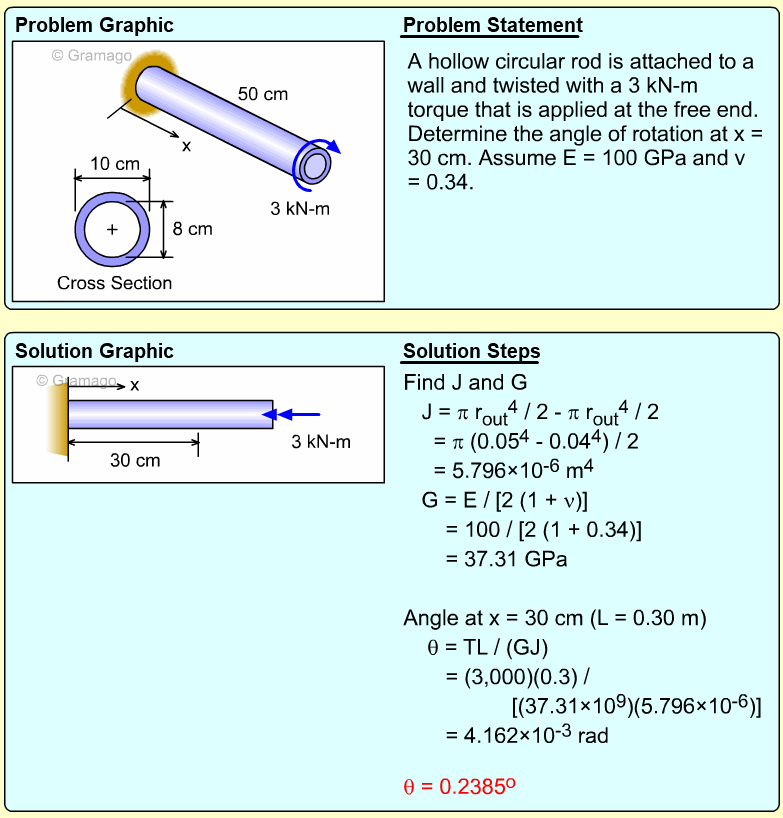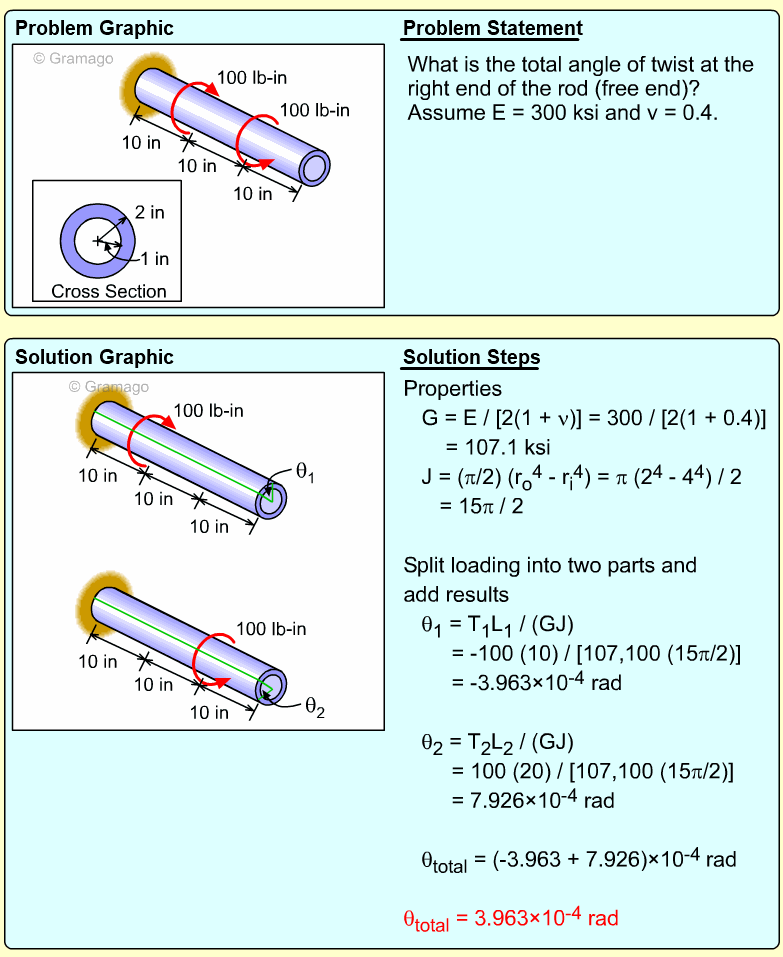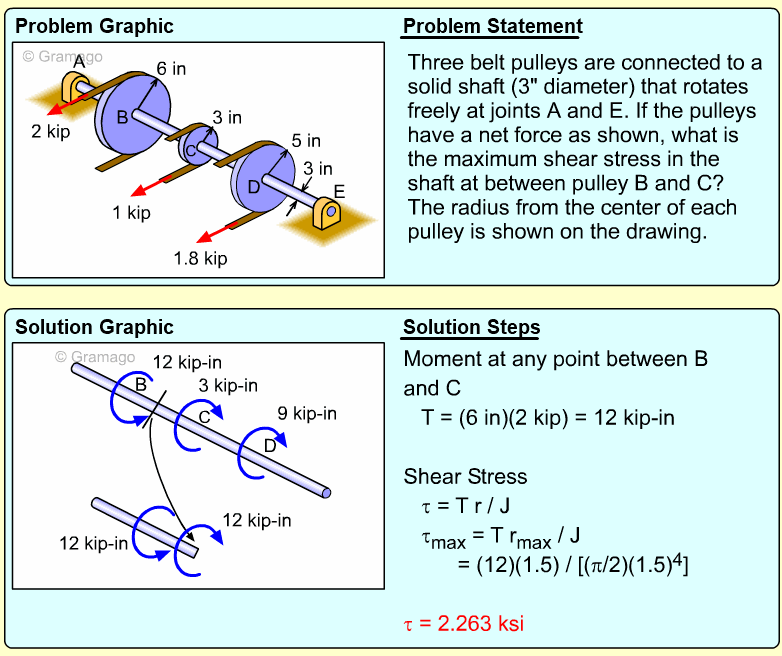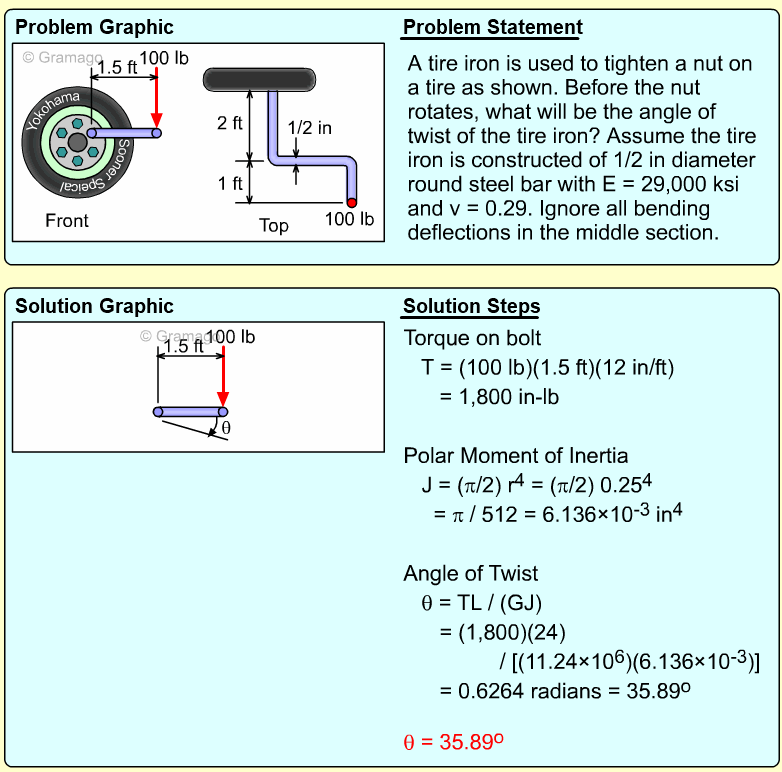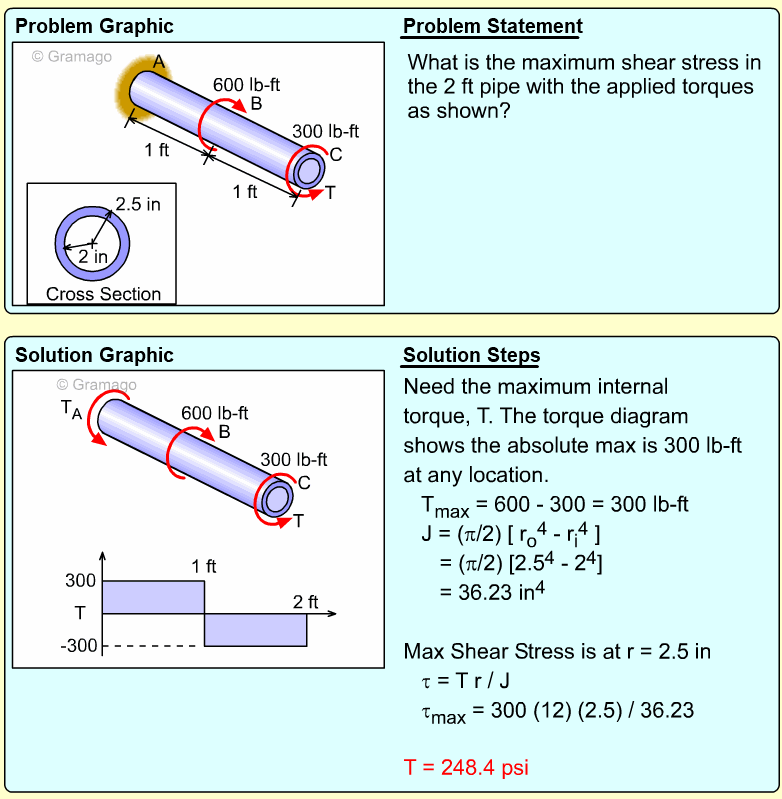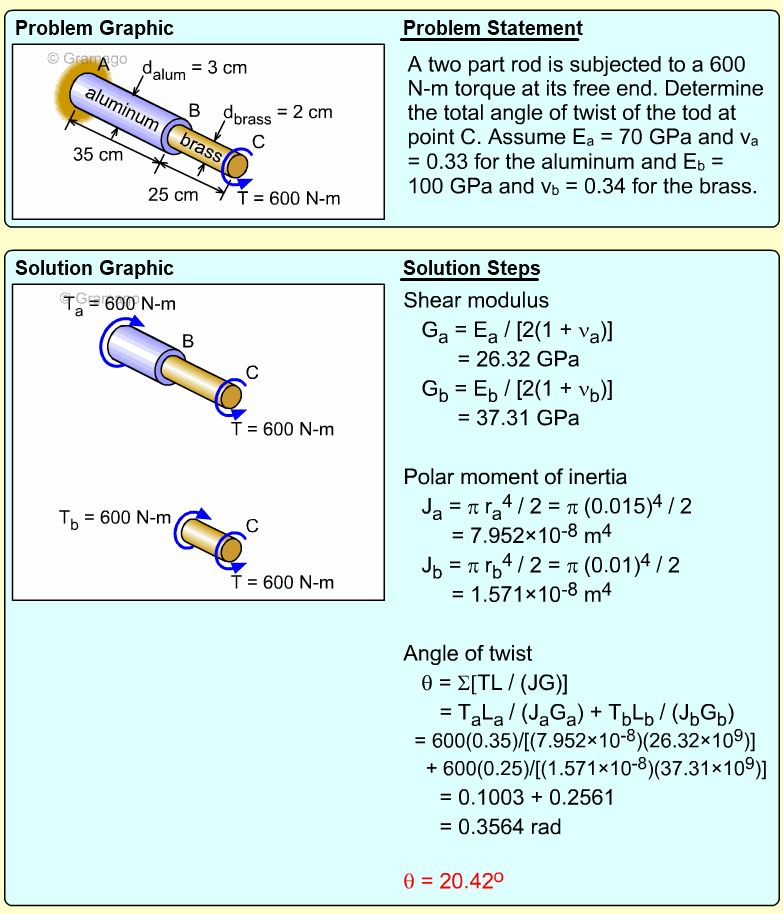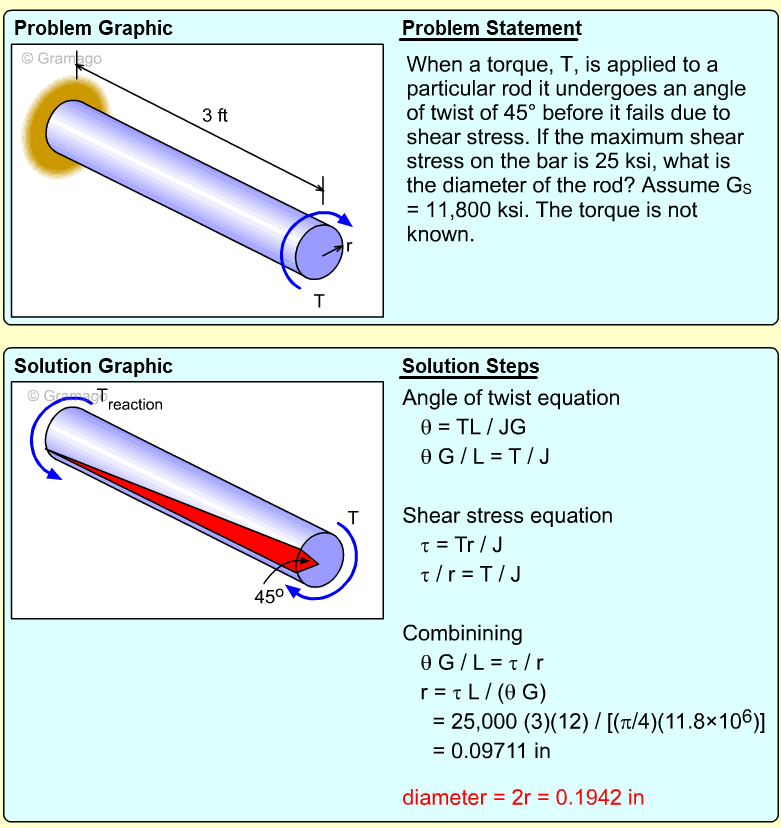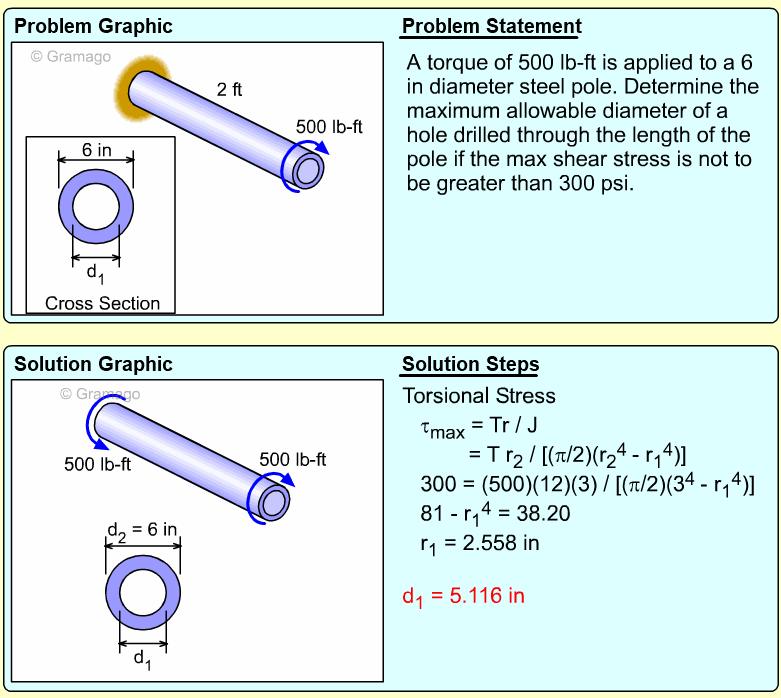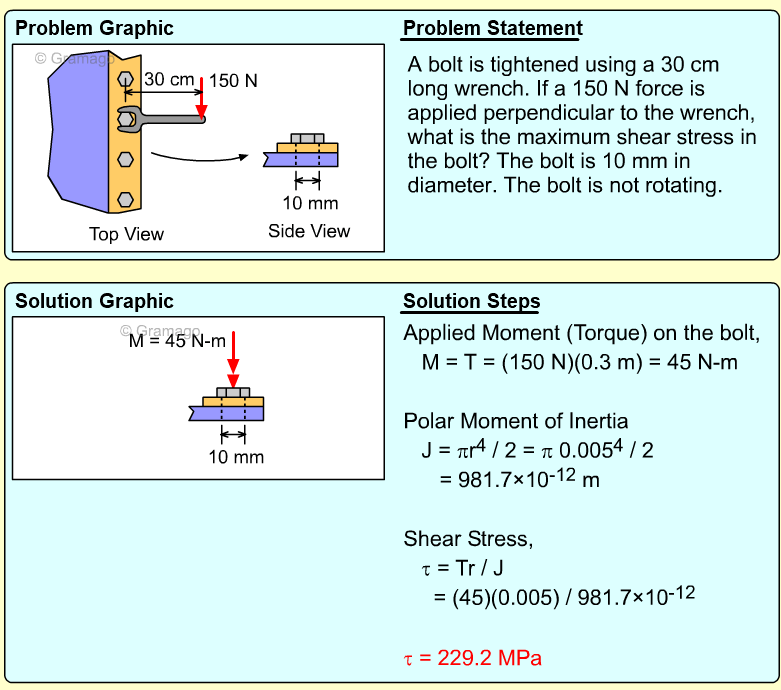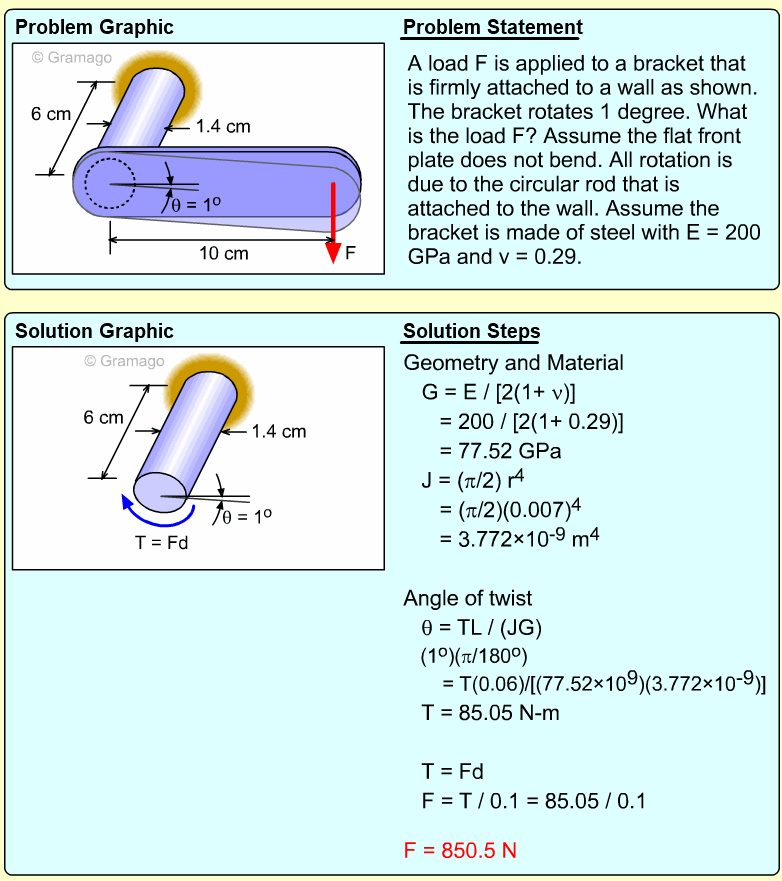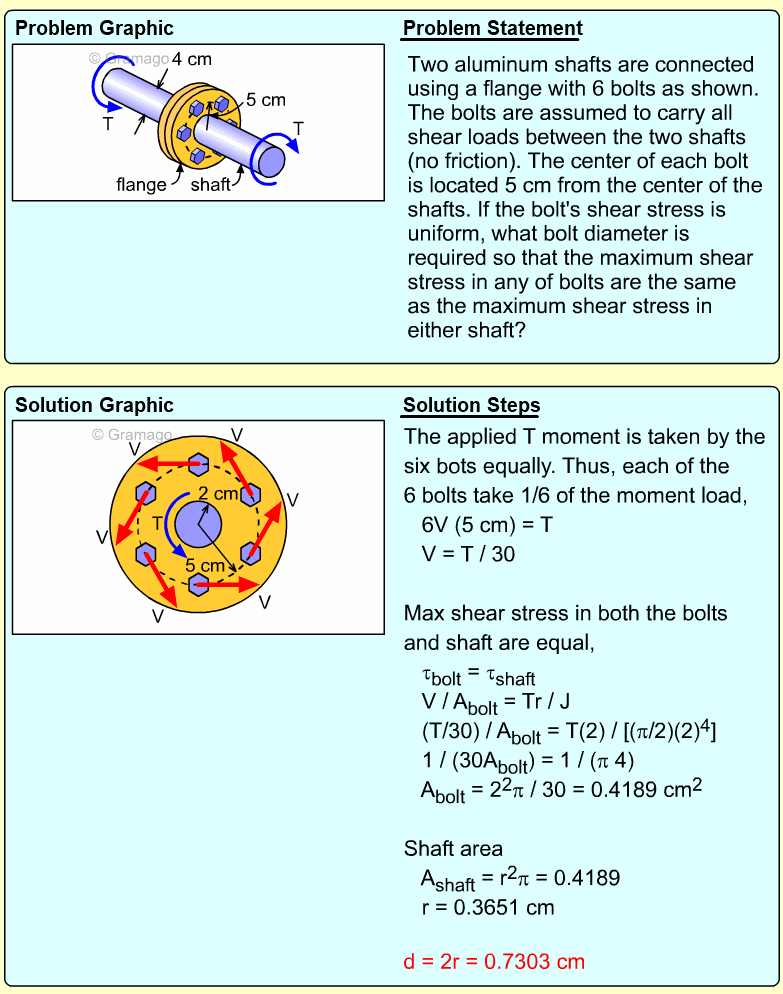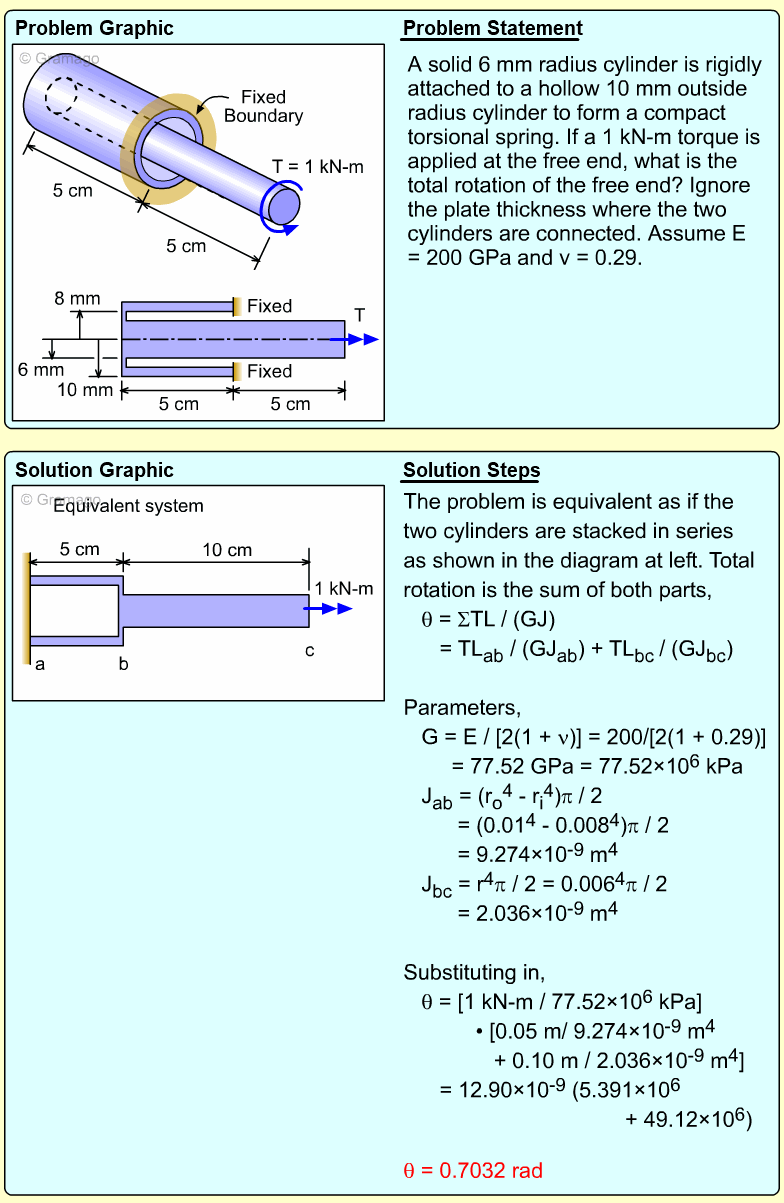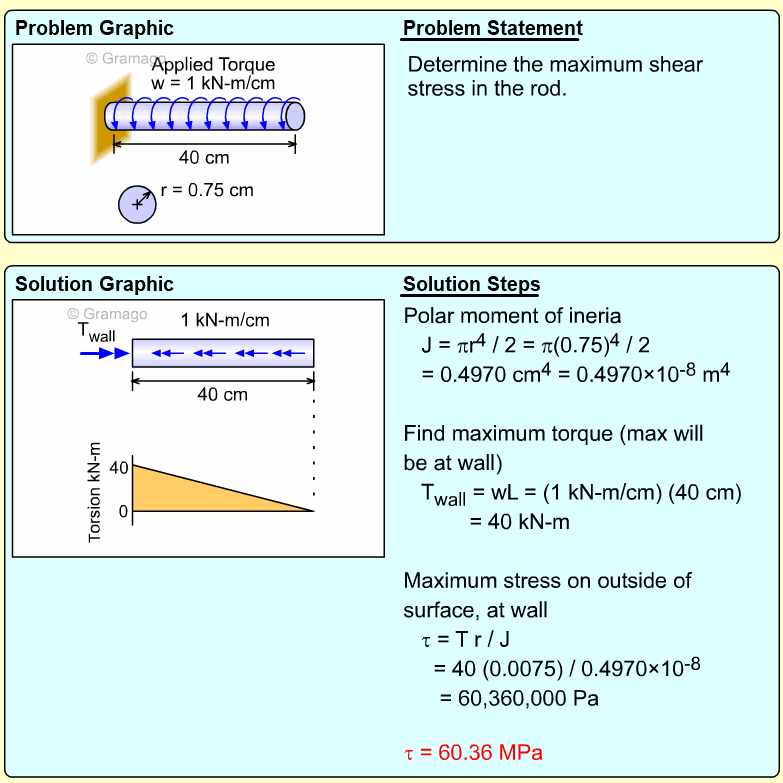| Ch 2. Torsion | Multimedia Engineering Mechanics | ||||||
|
Circular Bars |
Nonuniform & Indeterminate |
Thin-walled Tubes |
Non-Circular Bars | ||||
| Circular Bars and Shafts | Case Intro | Theory | Case Solution | Example |
| Chapter |
| 1. Stress/Strain |
| 2. Torsion |
| 3. Beam Shr/Moment |
| 4. Beam Stresses |
| 5. Beam Deflections |
| 6. Beam-Advanced |
| 7. Stress Analysis |
| 8. Strain Analysis |
| 9. Columns |
| Appendix |
| Basic Math |
| Units |
| Basic Mechanics Eqs |
| Sections |
| Material Properties |
| Structural Shapes |
| Beam Equations |
| eBooks |
| Dynamics |
| Fluids |
| Math |
| Mechanics |
| Statics |
| Thermodynamics |
| ©Kurt Gramoll |
|
|
||
| Example |
||
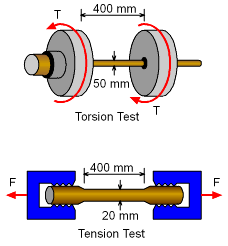 Test Specimens |
To determine mechanical properties of a material, a torsion test and a tension test was done for two different diameter bar made from the same material as shown in the figures on the left. During the torsion test, a maximum shear stress of 100 MPa was measured on a bar 50 mm diameter. The angle of twist was 2.5 degree over a length of 400 mm. The tensile test was done with a bar of 20 mm diameter and 400 mm length. The specimen had an elongation of 0.5 mm when subjected to a tensile load of 40 kN. Determine the Poisson's ratio of the material. |
|
| Solution |
||
Torsion test data: Diameter of bar, d1 = 2r1 = 50 mm Tension test data: Diameter of bar, d2 = 2r2 = 20 mm To determine the poisson's ratio, it is necessary to know the modulus of elasticity and shear modulus of the material. These can be determined using the data from the two tests. |
||
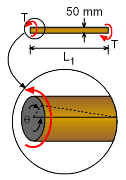 Torsion Test Details |
For the tension test Strain, Stress, Modulus of Elasticity, |
|
|
|
For the torsion test Shear Modulus, Now for Poisson's ratio, G = E / 2(1 + ν) Poisson's ratio, ν = 0.389 |
|
| Example Problem 1 |
||
|
||
| Example Problem 2 |
||
|
||
| Example Problem 3 |
||
|
||
| Example Problem 4 |
||
|
||
| Example Problem 5 |
||
|
||
| Example Problem 6 |
||
|
||
| Example Problem 7 |
||
|
||
| Example Problem 8 |
||
|
||
| Example Problem 9 |
||
|
||
| Example Problem 10 |
||
|
||
| Example Problem 11 |
||
|
||
| Example Problem 12 |
||
|
||
| Example Problem 13 |
||
|
||
| Example Problem 14 |
||
|
||
| Example Problem 15 |
||
|
||
| Example Problem 16 |
||
|
||
| Example Problem 17 |
||
|
||
| Example Problem 18 |
||
|
||
| Example Problem 19 |
||
|
||
| Example Problem 20 |
||
|
||
| Example Problem 21 |
||
|
||
| Example Problem 22 |
||
|
||

